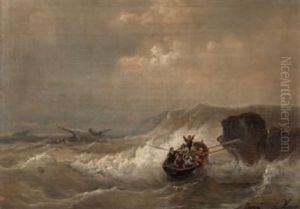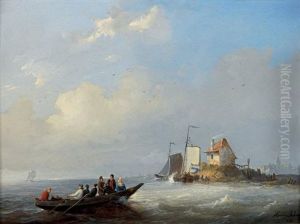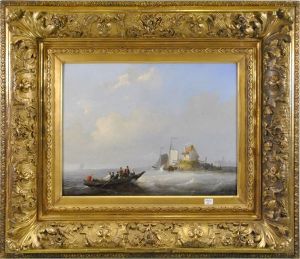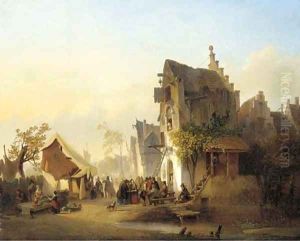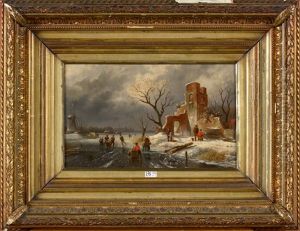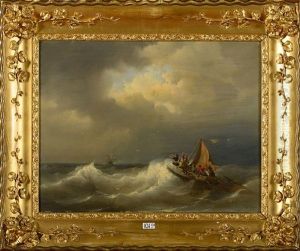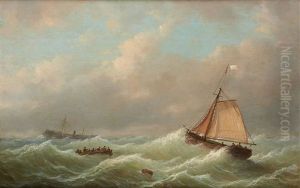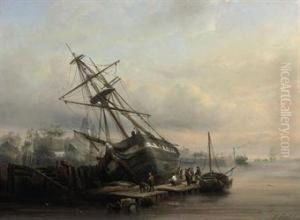Henri Adolphe Schaep Paintings
Henri Adolphe Schaep was a Belgian painter known for his landscapes, marine views, and figure paintings. Born on February 27, 1826, in Antwerp, he was a part of the vibrant art scene that flourished in Belgium during the 19th century. Schaep's works were recognized for their meticulous detail, atmospheric effects, and the sensitive use of color, which often reflected the romantic sensibilities of the time.
His formal art education began at the Royal Academy of Fine Arts in Antwerp, where many prominent Belgian artists have trained. At the academy, Schaep honed his skills and was particularly influenced by the Flemish and Dutch painting traditions, which emphasized naturalistic detail and a fine technique. He was also influenced by the Barbizon school, which advocated for plein air painting and had a more realistic approach to depicting landscape and rural scenes.
Throughout his career, Schaep exhibited his works widely, participating in various salons and exhibitions. His paintings were well-received, earning him a respectable reputation among collectors and fellow artists. He was known to have a meticulous approach to his craft, often working on a piece until he achieved the desired effect of light and texture that became characteristic of his style.
Schaep's oeuvre primarily consists of serene landscapes and coastal scenes, often populated with figures going about their daily lives. His attention to the subtleties of light and shadow imbued his paintings with a sense of tranquility and timelessness. Schaep's marine paintings, in particular, showcase his ability to capture the mood of the sea, from calm, reflective waters to the more tumultuous conditions of the open waters.
Henri Adolphe Schaep's life was cut short when he passed away relatively young at the age of 44, on January 16, 1870. Despite his premature death, Schaep left behind a body of work that continued to inspire and influence artists in Belgium and beyond. His paintings can still be found in museum collections and are appreciated by art enthusiasts for their contribution to the Belgian art heritage of the 19th century.





